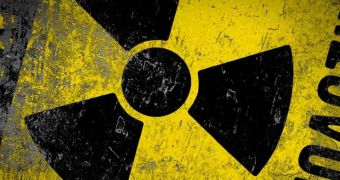Following the Fukushima nuclear disaster in March 2011, it took only a few days for researchers to report an increase in the levels of atmospheric radiation recorded on the US west coast.
Radioactive ocean plume (i.e. radioactive particles in ocean plume), on the other hand, needs a wee more time to travel to this part of the world, scientists say.
More precisely, it appears that the radioactive ocean plume that formed in the aftermath of the Fukushima nuclear disaster will hit US shorelines within three years from the date of the catastrophe, Science News reports.
As specialist Dr. Erik van Sebille puts it, “Observers on the west coast of the United States will be able to see a measurable increase in radioactive material three years after the event.”
Dr. Erik van Sebille and his fellow researchers reached this conclusion after piecing together several models that indicate how and where radiation coming from the Fukushima disaster will travel over the next 10 years, the same source informs us.
Interestingly enough, the scientists say that the predicted increase in radiation levels recorded on the US west coast is unlikely to constitute a threat to public health.
Otherwise put, there is no reason for people living in these regions to pack their suitcases and move someplace else.
As the researches explain, currents active off the Japanese coast, i.e. the Kuroshio Current and the Kurushio Extension, and in other parts of the ocean will take care of diluting the radioactive material well below concentrations that the World Health Organization presently labels as safe.
By the looks of it, it only takes about 4 months for these currents to dilute the radioactive material up to the point when it is no longer dangerous.
“People on those coastlines should not be concerned as the concentration of radioactive material quickly drops below World Health Organisation safety levels as soon as it leaves Japanese waters,” Dr. Erik van Sebille reassures.

 14 DAY TRIAL //
14 DAY TRIAL //